

How to Annotate Texts
Use the links below to jump directly to any section of this guide:
Annotation Fundamentals
How to start annotating , how to annotate digital texts, how to annotate a textbook, how to annotate a scholarly article or book, how to annotate literature, how to annotate images, videos, and performances, additional resources for teachers.
Writing in your books can make you smarter. Or, at least (according to education experts), annotation–an umbrella term for underlining, highlighting, circling, and, most importantly, leaving comments in the margins–helps students to remember and comprehend what they read. Annotation is like a conversation between reader and text. Proper annotation allows students to record their own opinions and reactions, which can serve as the inspiration for research questions and theses. So, whether you're reading a novel, poem, news article, or science textbook, taking notes along the way can give you an advantage in preparing for tests or writing essays. This guide contains resources that explain the benefits of annotating texts, provide annotation tools, and suggest approaches for diverse kinds of texts; the last section includes lesson plans and exercises for teachers.
Why annotate? As the resources below explain, annotation allows students to emphasize connections to material covered elsewhere in the text (or in other texts), material covered previously in the course, or material covered in lectures and discussion. In other words, proper annotation is an organizing tool and a time saver. The links in this section will introduce you to the theory, practice, and purpose of annotation.
How to Mark a Book, by Mortimer Adler
This famous, charming essay lays out the case for marking up books, and provides practical suggestions at the end including underlining, highlighting, circling key words, using vertical lines to mark shifts in tone/subject, numbering points in an argument, and keeping track of questions that occur to you as you read.
How Annotation Reshapes Student Thinking (TeacherHUB)
In this article, a high school teacher discusses the importance of annotation and how annotation encourages more effective critical thinking.
The Future of Annotation (Journal of Business and Technical Communication)
This scholarly article summarizes research on the benefits of annotation in the classroom and in business. It also discusses how technology and digital texts might affect the future of annotation.
Annotating to Deepen Understanding (Texas Education Agency)
This website provides another introduction to annotation (designed for 11th graders). It includes a helpful section that teaches students how to annotate reading comprehension passages on tests.
Once you understand what annotation is, you're ready to begin. But what tools do you need? How do you prepare? The resources linked in this section list strategies and techniques you can use to start annotating.
What is Annotating? (Charleston County School District)
This resource gives an overview of annotation styles, including useful shorthands and symbols. This is a good place for a student who has never annotated before to begin.
How to Annotate Text While Reading (YouTube)
This video tutorial (appropriate for grades 6–10) explains the basic ins and outs of annotation and gives examples of the type of information students should be looking for.
Annotation Practices: Reading a Play-text vs. Watching Film (U Calgary)
This blog post, written by a student, talks about how the goals and approaches of annotation might change depending on the type of text or performance being observed.
Annotating Texts with Sticky Notes (Lyndhurst Schools)
Sometimes students are asked to annotate books they don't own or can't write in for other reasons. This resource provides some strategies for using sticky notes instead.
Teaching Students to Close Read...When You Can't Mark the Text (Performing in Education)
Here, a sixth grade teacher demonstrates the strategies she uses for getting her students to annotate with sticky notes. This resource includes a link to the teacher's free Annotation Bookmark (via Teachers Pay Teachers).
Digital texts can present a special challenge when it comes to annotation; emerging research suggests that many students struggle to critically read and retain information from digital texts. However, proper annotation can solve the problem. This section contains links to the most highly-utilized platforms for electronic annotation.
Evernote is one of the two big players in the "digital annotation apps" game. In addition to allowing users to annotate digital documents, the service (for a fee) allows users to group multiple formats (PDF, webpages, scanned hand-written notes) into separate notebooks, create voice recordings, and sync across all sorts of devices.
OneNote is Evernote's main competitor. Reviews suggest that OneNote allows for more freedom for digital note-taking than Evernote, but that it is slightly more awkward to import and annotate a PDF, especially on certain platforms. However, OneNote's free version is slightly more feature-filled, and OneNote allows you to link your notes to time stamps on an audio recording.
Diigo is a basic browser extension that allows a user to annotate webpages. Diigo also offers a Screenshot app that allows for direct saving to Google Drive.
While the creators of Hypothesis like to focus on their app's social dimension, students are more likely to be interested in the private highlighting and annotating functions of this program.
Foxit PDF Reader
Foxit is one of the leading PDF readers. Though the full suite must be purchased, Foxit offers a number of annotation and highlighting tools for free.
Nitro PDF Reader
This is another well-reviewed, free PDF reader that includes annotation and highlighting. Annotation, text editing, and other tools are included in the free version.
Goodreader is a very popular Mac-only app that includes annotation and editing tools for PDFs, Word documents, Powerpoint, and other formats.
Although textbooks have vocabulary lists, summaries, and other features to emphasize important material, annotation can allow students to process information and discover their own connections. This section links to guides and video tutorials that introduce you to textbook annotation.
Annotating Textbooks (Niagara University)
This PDF provides a basic introduction as well as strategies including focusing on main ideas, working by section or chapter, annotating in your own words, and turning section headings into questions.
A Simple Guide to Text Annotation (Catawba College)
The simple, practical strategies laid out in this step-by-step guide will help students learn how to break down chapters in their textbooks using main ideas, definitions, lists, summaries, and potential test questions.
Annotating (Mercer Community College)
This packet, an excerpt from a literature textbook, provides a short exercise and some examples of how to do textbook annotation, including using shorthand and symbols.
Reading Your Healthcare Textbook: Annotation (Saddleback College)
This powerpoint contains a number of helpful suggestions, especially for students who are new to annotation. It emphasizes limited highlighting, lots of student writing, and using key words to find the most important information in a textbook. Despite the title, it is useful to a student in any discipline.
Annotating a Textbook (Excelsior College OWL)
This video (with included transcript) discusses how to use textbook features like boxes and sidebars to help guide annotation. It's an extremely helpful, detailed discussion of how textbooks are organized.
Because scholarly articles and books have complex arguments and often depend on technical vocabulary, they present particular challenges for an annotating student. The resources in this section help students get to the heart of scholarly texts in order to annotate and, by extension, understand the reading.
Annotating a Text (Hunter College)
This resource is designed for college students and shows how to annotate a scholarly article using highlighting, paraphrase, a descriptive outline, and a two-margin approach. It ends with a sample passage marked up using the strategies provided.
Guide to Annotating the Scholarly Article (ReadWriteThink.org)
This is an effective introduction to annotating scholarly articles across all disciplines. This resource encourages students to break down how the article uses primary and secondary sources and to annotate the types of arguments and persuasive strategies (synthesis, analysis, compare/contrast).
How to Highlight and Annotate Your Research Articles (CHHS Media Center)
This video, developed by a high school media specialist, provides an effective beginner-level introduction to annotating research articles.
How to Read a Scholarly Book (AndrewJacobs.org)
In this essay, a college professor lets readers in on the secrets of scholarly monographs. Though he does not discuss annotation, he explains how to find a scholarly book's thesis, methodology, and often even a brief literature review in the introduction. This is a key place for students to focus when creating annotations.
A 5-step Approach to Reading Scholarly Literature and Taking Notes (Heather Young Leslie)
This resource, written by a professor of anthropology, is an even more comprehensive and detailed guide to reading scholarly literature. Combining the annotation techniques above with the reading strategy here allows students to process scholarly book efficiently.
Annotation is also an important part of close reading works of literature. Annotating helps students recognize symbolism, double meanings, and other literary devices. These resources provide additional guidelines on annotating literature.
AP English Language Annotation Guide (YouTube)
In this ~10 minute video, an AP Language teacher provides tips and suggestions for using annotations to point out rhetorical strategies and other important information.
Annotating Text Lesson (YouTube)
In this video tutorial, an English teacher shows how she uses the white board to guide students through annotation and close reading. This resource uses an in-depth example to model annotation step-by-step.
Close Reading a Text and Avoiding Pitfalls (Purdue OWL)
This resources demonstrates how annotation is a central part of a solid close reading strategy; it also lists common mistakes to avoid in the annotation process.
AP Literature Assignment: Annotating Literature (Mount Notre Dame H.S.)
This brief assignment sheet contains suggestions for what to annotate in a novel, including building connections between parts of the book, among multiple books you are reading/have read, and between the book and your own experience. It also includes samples of quality annotations.
AP Handout: Annotation Guide (Covington Catholic H.S.)
This annotation guide shows how to keep track of symbolism, figurative language, and other devices in a novel using a highlighter, a pencil, and every part of a book (including the front and back covers).
In addition to written resources, it's possible to annotate visual "texts" like theatrical performances, movies, sculptures, and paintings. Taking notes on visual texts allows students to recall details after viewing a resource which, unlike a book, can't be re-read or re-visited ( for example, a play that has finished its run, or an art exhibition that is far away). These resources draw attention to the special questions and techniques that students should use when dealing with visual texts.
How to Take Notes on Videos (U of Southern California)
This resource is a good place to start for a student who has never had to take notes on film before. It briefly outlines three general approaches to note-taking on a film.
How to Analyze a Movie, Step-by-Step (San Diego Film Festival)
This detailed guide provides lots of tips for film criticism and analysis. It contains a list of specific questions to ask with respect to plot, character development, direction, musical score, cinematography, special effects, and more.
How to "Read" a Film (UPenn)
This resource provides an academic perspective on the art of annotating and analyzing a film. Like other resources, it provides students a checklist of things to watch out for as they watch the film.
Art Annotation Guide (Gosford Hill School)
This resource focuses on how to annotate a piece of art with respect to its formal elements like line, tone, mood, and composition. It contains a number of helpful questions and relevant examples.
Photography Annotation (Arts at Trinity)
This resource is designed specifically for photography students. Like some of the other resources on this list, it primarily focuses on formal elements, but also shows students how to integrate the specific technical vocabulary of modern photography. This resource also contains a number of helpful sample annotations.
How to Review a Play (U of Wisconsin)
This resource from the University of Wisconsin Writing Center is designed to help students write a review of a play. It contains suggested questions for students to keep in mind as they watch a given production. This resource helps students think about staging, props, script alterations, and many other key elements of a performance.
This section contains links to lessons plans and exercises suitable for high school and college instructors.
Beyond the Yellow Highlighter: Teaching Annotation Skills to Improve Reading Comprehension (English Journal)
In this journal article, a high school teacher talks about her approach to teaching annotation. This article makes a clear distinction between annotation and mere highlighting.
Lesson Plan for Teaching Annotation, Grades 9–12 (readwritethink.org)
This lesson plan, published by the National Council of Teachers of English, contains four complete lessons that help introduce high school students to annotation.
Teaching Theme Using Close Reading (Performing in Education)
This lesson plan was developed by a middle school teacher, and is aligned to Common Core. The teacher presents her strategies and resources in comprehensive fashion.
Analyzing a Speech Using Annotation (UNC-TV/PBS Learning Media)
This complete lesson plan, which includes a guide for the teacher and relevant handouts for students, will prepare students to analyze both the written and presentation components of a speech. This lesson plan is best for students in 6th–10th grade.
Writing to Learn History: Annotation and Mini-Writes (teachinghistory.org)
This teaching guide, developed for high school History classes, provides handouts and suggested exercises that can help students become more comfortable with annotating historical sources.
Writing About Art (The College Board)
This Prezi presentation is useful to any teacher introducing students to the basics of annotating art. The presentation covers annotating for both formal elements and historical/cultural significance.
Film Study Worksheets (TeachWithMovies.org)
This resource contains links to a general film study worksheet, as well as specific worksheets for novel adaptations, historical films, documentaries, and more. These resources are appropriate for advanced middle school students and some high school students.
Annotation Practice Worksheet (La Guardia Community College)
This worksheet has a sample text and instructions for students to annotate it. It is a useful resource for teachers who want to give their students a chance to practice, but don't have the time to select an appropriate piece of text.
- PDFs for all 136 Lit Terms we cover
- Downloads of 1895 LitCharts Lit Guides
- Teacher Editions for every Lit Guide
- Explanations and citation info for 39,904 quotes across 1895 books
- Downloadable (PDF) line-by-line translations of every Shakespeare play
Need something? Request a new guide .
How can we improve? Share feedback .
LitCharts is hiring!

7 Strategies for Teaching Students How to Annotate
- November 7, 2018
For many educators, annotation goes hand in hand with developing close reading skills. Annotation more fully engages students and increases reading comprehension strategies, helping students develop a deeper understanding and appreciation for literature.
However, it’s also one of the more difficult skills to teach. In order to think critically about a text, students need to learn how to actively engage with the text they’re reading. Annotation provides that immersive experience, and new digital reading technologies not only make annotation easier than ever, but also make it possible for any book, article, or text to be annotated.
1. Teach the Basics of Good Annotation
Help your students understand that annotation is simply the process of thoughtful reading and making notes as they study a text. Start with some basic forms of annotation:
- highlighting a phrase or sentence and including a comment
- circling a word that needs defining
- posing a question when something isn’t fully understood
- writing a short summary of a key section
Assure them that good annotating will help them concentrate and better understand what they read and better remember their thoughts and ideas when they revisit the text.
2. Model Effective Annotation
One of the most effective ways to teach annotation is to show students your own thought process when annotating a text. Display a sample text and think out loud as you make notes. Show students how you might underline key words or sentences and write comments or questions, and explain what you’re thinking as you go through the reading and annotation process.
Annotation Activity: Project a short, simple text and let students come up and write their own comments and discuss what they’ve written and why. This type of modeling and interaction helps students understand the thought process that critical reading requires.
3. Give Your Students a Reading Checklist
When first teaching students about annotation, you can help shape their critical analysis and active reading strategies by giving them specific things to look for while reading, like a checklist or annotation worksheet for a text. You might have them explain how headings and subheads connect with the text, or have them identify facts that add to their understanding.
4. Provide an Annotation Rubric
When you know what your annotation goals are for your students, it can be useful to develop a simple rubric that defines what high-quality and thoughtful annotation looks like. This provides guidance for your students and makes grading easier for you. You can modify your rubric as goals and students’ needs change over time.
5. Keep It Simple
Especially for younger or struggling readers, help your students develop self-confidence by keeping things simple. Ask them to circle a word they don’t know, look up that word in the dictionary, and write the definition in a comment. They can also write an opinion on a particular section, so there’s no right or wrong answer.
6. Teach Your Students How to Annotate a PDF
Or other digital texts. Most digital reading platforms include a number of tools that make annotation easy. These include highlighters, text comments, sticky notes, mark up tools for underlining, circling, or drawing boxes, and many more. If you don’t have a digital reading platform, you can also teach how to annotate a basic PDF text using simple annotation tools like highlights or comments.
7. Make It Fun!
The more creative you get with annotation, the more engaged your students will be. So have some fun with it!
- Make a scavenger hunt by listing specific components to identify
- Color code concepts and have students use multicolored highlighters
- Use stickers to represent and distinguish the five story elements: character, setting, plot, conflict, and theme
- Choose simple symbols to represent concepts, and let students draw those as illustrated annotations: a magnifying glass could represent clues in the text, a key an important idea, and a heart could indicate a favorite part
Annotation Activity: Create a dice game where students have to find concepts and annotate them based on the number they roll. For example, 1 = Circle and define a word you don’t know, 2 = Underline a main character, 3 = Highlight the setting, etc.
Teaching students how to annotate gives them an invaluable tool for actively engaging with a text. It helps them think more critically, it increases retention, and it instills confidence in their ability to analyze more complex texts.
More Resources articles

Ideas to Celebrate National Library Week and Encourage a Young Writer Day 2024
Inspiring young children to read, share stories, and write can help them build skills that will stay with them for years to come. April is

15 of the Best Math Picture Books for Kids
Math is around us everywhere, from the addition used when counting toys to the geometry of spotting shapes in the clouds. When you’re making a

Family Guide: Early Learning & Development Standards by Grade
Back-to-school season is such an exciting time for young learners. It’s the beginning of a year full of new milestones to come, including learning skills,
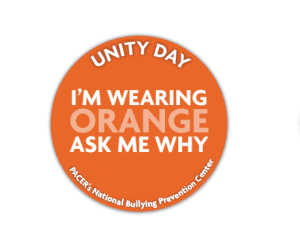
End Bullying: October is National Bullying Prevention Month

Phonics vs Phonological Awareness: A Guide Informed by the Science of Reading

MacKenzie Scott’s Yield Giving Awards Waterford.org a $10 Million Grant

Annotating Texts
What is annotation.
Annotation can be:
- A systematic summary of the text that you create within the document
- A key tool for close reading that helps you uncover patterns, notice important words, and identify main points
- An active learning strategy that improves comprehension and retention of information
Why annotate?
- Isolate and organize important material
- Identify key concepts
- Monitor your learning as you read
- Make exam prep effective and streamlined
- Can be more efficient than creating a separate set of reading notes
How do you annotate?
Summarize key points in your own words .
- Use headers and words in bold to guide you
- Look for main ideas, arguments, and points of evidence
- Notice how the text organizes itself. Chronological order? Idea trees? Etc.
Circle key concepts and phrases
- What words would it be helpful to look-up at the end?
- What terms show up in lecture? When are different words used for similar concepts? Why?
Write brief comments and questions in the margins
- Be as specific or broad as you would like—use these questions to activate your thinking about the content
- See our handout on reading comprehension tips for some examples
Use abbreviations and symbols
- Try ? when you have a question or something you need to explore further
- Try ! When something is interesting, a connection, or otherwise worthy of note
- Try * For anything that you might use as an example or evidence when you use this information.
- Ask yourself what other system of symbols would make sense to you.
Highlight/underline
- Highlight or underline, but mindfully. Check out our resource on strategic highlighting for tips on when and how to highlight.
Use comment and highlight features built into pdfs, online/digital textbooks, or other apps and browser add-ons
- Are you using a pdf? Explore its highlight, edit, and comment functions to support your annotations
- Some browsers have add-ons or extensions that allow you to annotate web pages or web-based documents
- Does your digital or online textbook come with an annotation feature?
- Can your digital text be imported into a note-taking tool like OneNote, EverNote, or Google Keep? If so, you might be able to annotate texts in those apps
What are the most important takeaways?
- Annotation is about increasing your engagement with a text
- Increased engagement, where you think about and process the material then expand on your learning, is how you achieve mastery in a subject
- As you annotate a text, ask yourself: how would I explain this to a friend?
- Put things in your own words and draw connections to what you know and wonder
The table below demonstrates this process using a geography textbook excerpt (Press 2004):
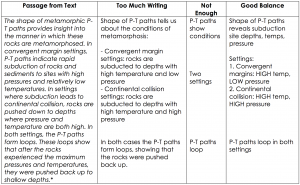
A common concern about annotating texts: It takes time!
Yes, it can, but that time isn’t lost—it’s invested.
Spending the time to annotate on the front end does two important things:
- It saves you time later when you’re studying. Your annotated notes will help speed up exam prep, because you can review critical concepts quickly and efficiently.
- It increases the likelihood that you will retain the information after the course is completed. This is especially important when you are supplying the building blocks of your mind and future career.
One last tip: Try separating the reading and annotating processes! Quickly read through a section of the text first, then go back and annotate.
Works consulted:
Nist, S., & Holschuh, J. (2000). Active learning: strategies for college success. Boston: Allyn and Bacon. 202-218.
Simpson, M., & Nist, S. (1990). Textbook annotation: An effective and efficient study strategy for college students. Journal of Reading, 34: 122-129.
Press, F. (2004). Understanding earth (4th ed). New York: W.H. Freeman. 208-210.

Make a Gift
Teaching Student Annotation: Constructing Meaning Through Connections

- Resources & Preparation
- Instructional Plan
- Related Resources
Students learn about the purposes and techniques of annotation by examining text closely and critically. They study sample annotations and identify the purposes annotation can serve. Students then practice annotation through a careful reading of a story excerpt, using specific guidelines and writing as many annotations as possible. Students then work in pairs to peer review their annotations, practice using footnotes and PowerPoint to present annotations, and reflect on how creating annotations can change a reader's perspective through personal connection with text.
Featured Resources
- Making Annotations: A User's Guide : Use this resource guide to help students make connections with text through definition, analysis of author purpose, paraphrasing, personal identification, explaining historical context, and more.
From Theory to Practice
In his English Journal article " I'll Have Mine Annotated, Please: Helping Students Make Connections with Text" Matthew D. Brown expresses a basic truth in English Language Arts instruction: "Reading is one thing, but getting something of value from what we read is another" (73). Brown uses the avenue of personal connection to facilitate the valuable outcomes that can result from reading and interacting with text. He begins with student-centered questions such as, "What were they thinking about as they read? What connections were they making? What questions did they have, and could they find answers to those questions?" (73). Brown's questions lead to providing students with instruction and opportunities that align with the NCTE Principles of Adolescent Literacy Reform: A Policy Research Brief by "link[ing] their personal experiences and their texts, making connections between the students' existing literacy resources and the ones necessary for various disciplines" (5). Further Reading
Common Core Standards
This resource has been aligned to the Common Core State Standards for states in which they have been adopted. If a state does not appear in the drop-down, CCSS alignments are forthcoming.
State Standards
This lesson has been aligned to standards in the following states. If a state does not appear in the drop-down, standard alignments are not currently available for that state.
NCTE/IRA National Standards for the English Language Arts
- 1. Students read a wide range of print and nonprint texts to build an understanding of texts, of themselves, and of the cultures of the United States and the world; to acquire new information; to respond to the needs and demands of society and the workplace; and for personal fulfillment. Among these texts are fiction and nonfiction, classic and contemporary works.
- 2. Students read a wide range of literature from many periods in many genres to build an understanding of the many dimensions (e.g., philosophical, ethical, aesthetic) of human experience.
- 3. Students apply a wide range of strategies to comprehend, interpret, evaluate, and appreciate texts. They draw on their prior experience, their interactions with other readers and writers, their knowledge of word meaning and of other texts, their word identification strategies, and their understanding of textual features (e.g., sound-letter correspondence, sentence structure, context, graphics).
- 4. Students adjust their use of spoken, written, and visual language (e.g., conventions, style, vocabulary) to communicate effectively with a variety of audiences and for different purposes.
- 5. Students employ a wide range of strategies as they write and use different writing process elements appropriately to communicate with different audiences for a variety of purposes.
- 6. Students apply knowledge of language structure, language conventions (e.g., spelling and punctuation), media techniques, figurative language, and genre to create, critique, and discuss print and nonprint texts.
- 7. Students conduct research on issues and interests by generating ideas and questions, and by posing problems. They gather, evaluate, and synthesize data from a variety of sources (e.g., print and nonprint texts, artifacts, people) to communicate their discoveries in ways that suit their purpose and audience.
Materials and Technology
- Copies of "Eleven" by Sandra Cisceros or other text appropriate for the activities in this lesson
- Colored Pencils
- Sample Annotation PowerPoint on The Pearl
- Making Annotations: A User's Guide or one students create after discussion
- Annotation Sheet
- Student Sample Annotations from "Eleven"
- Annotation Peer Review Guide
- Example Student Brainstorming for Annotation
- Sample Revised and Published Annotations Using Footnotes
Preparation
- Find sample annotated texts to share with your students. Shakespeare's plays work well since many of his texts are annotated. Red Reader editions published by Discovery Teacher have great user-friendly annotations geared toward young adult readers. Look for selections that are engaging—ones that offer more than vocabulary definitions and give a variety of annotations beyond explanation and analysis.
- Alternatively, search Google Books for any text with annotations. A search for Romeo and Juliet , for example, will bring up numerous versions that can be viewed directly online.
- While much of the work will be done by students, it is useful to take some time to think about the role of annotations in a text. You will have students identify the functions of annotations, but it is always helpful if you have your own list of uses of annotations so that you can help guide students in this area of instruction if necessary.
- Make copies of all necessary handouts.
- Arrange for students to have access to Internet-connected computers if they will be doing their annotations in an online interactive.
- Test the Literary Graffiti and Webbing Tool interactives on your computers to familiarize yourself with the tools and ensure that you have the Flash plug-in installed. You can download the plug-in from the technical support page.
Student Objectives
Students will:
- examine and analyze text closely, critically, and carefully.
- make personal, meaningful connections with text.
- clearly communicate their ideas about a piece of text through writing, revision, and publication.
Session One
- Begin the session by asking students if they are familar with the word annotation . Point out the words note and notation as clues to the word's meaning. If students know the word, proceed with the next step. If students are unfamiliar, ask them to determine what the word means by seeing what the texts you pass out in the next step have in common.
- Pass out a variety of sample texts that use annotations. If you are using Google Books , direct students to texts online to have them examine the annotations that are used.
- Have the students skim the texts and carefully examine the annotations. Encourage students to begin to see the variety of ways that an editor of a text uses annotations.
- Working with a small group of their peers, students should create a list that shows what effective annotations might do.
- give definitions to difficult and unfamiliar words.
- give background information, especially explaining customs, traditions, and ways of living that may be unfamiliar to the reader.
- help explain what is going on in the text.
- make connections to other texts.
- point out the use of literary techniques and how they add meaning to the text.
- can use humor (or other styles that might be quite different from the main text).
- reveal that the writer of these annotations knows his or her reader well.
- The process of generating this list should move into a discussion about where these annotations came from—who wrote them and why. Guide students to think about the person who wrote these ideas, who looked at the text and did more than just read it, and who made a connection with the text. It is important here that students begin to realize that their understanding of what they have read comes from their interaction with what is on the page. You may wish to jumpstart the conversation by telling students about connections you make with watching films, as students may be more aware of doing so themselves.
- touch them emotionally, making them feel happiness as well as sadness.
- remind them of childhood experiences.
- teach them something new.
- change their perspective on an issue.
- help them see how they can better relate to others around them.
- help them see the world through someone else's experiences.
- Before beginning the next lesson, create your Annotation Guide reflecting the different functions of annotation the class discussed today (or use the Sample Annotation Guide ).
Session Two
- Pass out "Eleven" by Sandra Cisneros or any other text appropriate for your students and this activity.
- Read and discuss the story as needed, but resist spending too much time with the story since the goal of annotation is to get the students to connect with the text in their own ways.
- Pass out the Sample Annotation Guide or the one the class created and review the various ideas that were generated during the previous session, helping students to begin to think of the various ways that they can begin to connect to the story "Eleven."
- Pass out the Annotation Sheet and ask the students to choose a particularly memorable section of the story, a section large enough to fill up the lines given to them on the Annotation Sheet . (NOTE: While you could have the students create annotations in the margins of the entire text, isolating a small portion of the text will make the students' first attempt at annotations less daunting and more manageable. You can also use ReadWriteThink interactives Literary Graffiti or Webbing Tool at this point in the instructional process, replacing or supplementing the Annotation Sheet handout.)
- Share with students the Student Sample Annotations from "Eleven" and use the opportunity to review the various purposes of annotating and preview directions for the activity.
- Pass out the colored pencils. Make sure that students can each use a variety of colors in their annotating. Sharing pencils among members of a small group works best.
- Have the students find a word, phrase, or sentence on their Annotation Sheet that is meaningful or significant to them. Have them lightly color over that word, phrase, or sentence with one of their colored pencils.
- Students should then draw a line out toward the margin from what they just highlighted on their Annotation Sheet .
- Now students annotate their selected text. Using the Sample Annotation Guide , students should write an annotation for the highlighted text. They can talk about how they feel or discuss what images come to mind or share experiences that they have had. Any connection with that part of the text should be encouraged at this entry-level stage.
- Repeat this process several times. Encourage students to use a variety of annotations from the Sample Annotation Guide . But, most importantly, encourage them to make as many annotations as possible.
- What did they get out of writing annotations?
- What did they learn about the text that they didn't see before?
- How might this make them better readers?
- Students should take the time to share these reflections with each other and with the whole class. Collect responses to evaluate levels of engagement and to find any questions or concerns you may need to address.
Session Three
- Return annotations from the previous session and address any questions or concerns.
- Explain that, working in pairs, the students will examine each other's annotations and look for ideas that have the potential for further development and revision.
- Distribute copies the Annotation Peer Review Guide and explain how it will help them work together to select the best ideas that they have presented in their annotations. Peer review partners should label each annotation, comment on it, and look for several annotations that would benefit from revision and continued thinking.
- Have each pair narrow down their ideas to the four or five most significant annotations per student.
- Once this is done, give the students time to start revising and developing their ideas. Encourage them to elaborate on their ideas by explaining connections more fully, doing basic research to answer questions or find necessary information, or providing whatever other development would be appropriate.
- Circulate the room to look at what the students have chosen so that you can guide them with their development and writing. If you see the need to offer more guiding feedback, collecting the annotation revisions during this process may be helpful.
Session Four
- Once students have revised and developed a few of their annotations on their own, students should begin work toward a final draft.
- The students exchange their revised annotations.
- What is one thing that I really liked in this set of annotations?
- What is one thing that I found confusing, needed more explanation, etc.?
- If this were my set of annotations, what is one thing that I would change?
- Encourage students to rely heavily on the Sample Annotation Guide and the Annotation Peer Review Guide to make these comments during the peer review process. They should be looking to see that there are a variety of annotations and that the annotations dig deeper than just surface comments (e.g., definitions) and move toward meaningful personal connections and even literary analysis.
- Take the original format of the annotation sheet and have the students type up their work using colored text.
- Teach the students how to footnote, and then have them use this footnoting technique for the final draft of their annotations. See the Sample Student Brainstorming for Annotation and Sample Revised and Published Annotations Using Footnotes on The Great Gatsby . If using Microsoft Word, visit the resource Insert a Footnote or Endnote for information on how to use this feature in Word.
- Create a PowerPoint in which the first slide is the original text. The phrases are then highlighted in different colors and hyperlinked to other slides in the presentation which contain the annotations. See the Sample Annotation PowerPoint on The Pearl, and visit PowerPoint in the Classroom for tutorials on how to make the best use of PowerPoint functions.
- What did they learn by doing this activity?
- How did these annotations change their perspective on the text?
- In what ways did their thinking change as they worked through the drafting, rewriting, and revising of their annotations?
- Make sure that students are given time to share these reflections with each other and with the whole class.
- annotate a whole text, using the margins for annotating
- use sticky notes in textbooks or novels as a way to annotate larger works
- use annotations as part of a formal essay to provide personal comments to supplement the analysis they have written.
- Assessing Cultural Relevance: Exploring Personal Connections to a Text
- Graffiti Wall: Discussing and Responding to Literature Using Graphics
- In Literature, Interpretation Is the Thing
- Literary Scrapbooks Online: An Electronic Reader-Response Project
- Reader Response in Hypertext: Making Personal Connections to Literature
- Creative Outlining—From Freewriting to Formalizing
Student Assessment / Reflections
- Review and comment on student reflections after each step of the annotation drafting and revision process.
- If you use this lesson as an introduction to the idea of annotation, the focus of the assessment should be on the variety of annotations a student makes. Even so, teachers should be able to observe if students were able to move beyond surface connections (defining words, summarizing the story, and so forth) to deeper connections with the text (personal feelings, relating evens to past experiences, and so forth). Use an adaptation of the Annotation Peer Review Guide in this process.
- For those who take this lesson to its completion by having students generate a final published draft, the focus should move from just looking for a variety of annotations to focusing on the quality of the annotations. By working through the writing process with these annotations, students should have been able to comment meaningfully beyond what they began with in their “rough draft.” This should be most evident in the reflections students write in response to the process of creating annotations. Again, a modified version of the Annotation Peer Review Guide would be suitable for this evaluative purpose.
- Student Interactives
- Strategy Guides
- Professional Library
- Calendar Activities
The Webbing Tool provides a free-form graphic organizer for activities that ask students to pursue hypertextual thinking and writing.
- Print this resource
Explore Resources by Grade
- Kindergarten K

- school Campus Bookshelves
- menu_book Bookshelves
- perm_media Learning Objects
- login Login
- how_to_reg Request Instructor Account
- hub Instructor Commons
- Download Page (PDF)
- Download Full Book (PDF)
- Periodic Table
- Physics Constants
- Scientific Calculator
- Reference & Cite
- Tools expand_more
- Readability
selected template will load here
This action is not available.

1.5: Annotating a Text
- Last updated
- Save as PDF
- Page ID 124364

- Gabriel Winer & Elizabeth Wadell
- Berkeley City College & Laney College via ASCCC Open Educational Resources Initiative (OERI)
"Annotation" means writing notes while you read, usually directly on the text you are reading. While it is common for students to highlight important information in a text, highlighting is considered a passive activity. We want to take notes as we read. Annotating is an important active reading strategy because we engage with a text as the reader. It is as though we are having a conversation with the writer. We might ask them questions, make predictions and connections, or show our agreement or disagreement. We also read a text more closely and retain it better since taking notes slows down our reading process. When it is time to write about a text or take a test, for instance, we will not need to re-read everything, and we can use our annotations instead. Each reader brings their own ideas and background “baggage” to the text, so your annotations will be different from your classmates. Reading is thinking, and like a mirror or a window as in Figure 1.5.1, annotating makes our thinking visible!

Studying an example annotation
Look at the example annotation below. What observations can you make? Discuss with a partner:
Notice this!
First, read the editorial. Think about what parts are important, how the parts connect to each other, and what questions you have.
Editorial from an online magazine: "A Win for Undocumented Immigrants is a Win for All"
Guest Column by Tram Nguyen, Virginia Mercury , March 27, 2020
Every person in Virginia deserves to live in their community free from fear.
The exclusion of undocumented Virginians from being able to drive has been a crippling barrier to that principle. But the state legislature has now passed a bill that will allow driving for many immigrant residents through driver privilege cards this session. At New Virginia Majority we have organized and advocated for this basic right, and now previously undocumented families and communities will legally be able to drive in the state of Virginia.
Having the right to drive can be a matter of life and death under everyday circumstances: a sick child that needs immediate medical attention, or a woman getting ready to bring a new life into the world. Most of us take this access for granted. This is a crucial advancement – for those that have waited patiently just to be able to drive themselves to work, take their children to doctor’s appointments, or attend local events, this a chance to become fully active members of their community.
Ovidia Castillo Rosa, a member of New Virginia Majority’s Loudoun County chapter described it best: ”Not having a driver’s license is like not having feet. Being able to drive would be like having wings. When I have a driver’s license, there are so many things that I’ll have the freedom to do, including starting my own business.”
Cecilia Cruz, a member of the New Virginia Majority, has been involved in the fight for the right to drive, and has called her representatives, and encouraged her friends and neighbors to march in support. “The streets will be more safe and more money will stay in the state,” she said. “Families will be able to leave their children and go to work in safety, without fear.”
Providing this credential will give thousands of Virginians the ability to legally drive and is a huge victory. But we recognize driver privilege cards are not the same as driver’s licenses, and there is much more to be done. Our communities, in an era of open and growing institutional racism and xenophobia, understand that having a driver’s privilege card has the potential to make them vulnerable, as it will make them immediately identifiable as an undocumented person and creates a segment of immigrant drivers.
Our organizers, advocates, and chapter members will continue to fight for a society that treats people equally and with dignity no matter what their status, language, zip code, gender, race, or ethnicity is, and we will work to strengthen privacy protections for all Virginians, regardless of immigration status.
When the presidential election comes to a close in the fall, we pledge to stand by immigrant communities and keep them informed of both the opportunities and threats presented by this law, regardless of who holds the office.
We believe in a Virginia that is welcoming and provides an opportunity for all its residents to succeed and live happy and healthy lives. The outcome of this legislative session was a step in the right direction and toward a more inclusive Virginia. But until all of our communities are granted the full protections and access to driver’s licenses, the fight continues.
Tram Nguyen is co-executive director of New Virginia Majority, which works to builds power in working-class communities of color, in immigrant communities, among LGBTQ people, women, youth, and progressives across the commonwealth.
"A Win for Undocumented Immigrants is a Win for All" was originally published in the Virginia Mercury and is licensed under CC BY NC ND.
Now look at Figure 1.5.2, an annotation of the same text. What do you notice? What else would you add? Discuss with a partner.
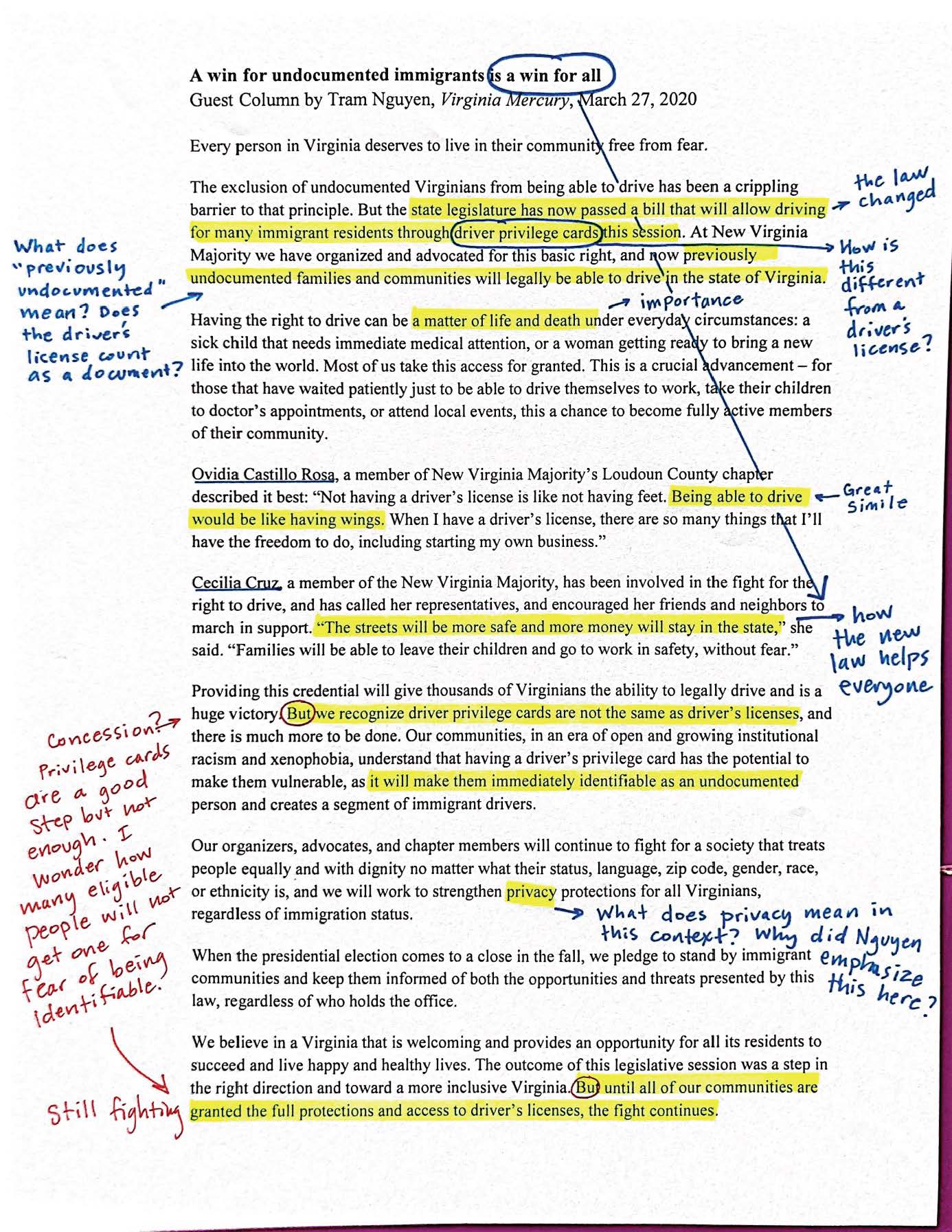
Figure 1.5.1 shows the text of "A Win for Undocumented Immigrants is a Win for all" by Tram Nguyen with some passages highlighted, with notes that summarize key information, ask questions, and respond to wording choices the writer made.
See 1.5.1 for an accessible version of the above model annotation .
Active readers use annotation as a way to
- Make predictions
- Ask questions and look for answers
- Visualize (make pictures in our mind or draw an image or diagram)
- Show agree/disagreements
- Identify problems and/or solutions
- Make connections to ourselves (our background, values, etc), other texts (articles, books, movies, etc), or the world (news events, politics, etc)
- Mark key points
- Summarize key points/ sections of the reading
- Make note of information that shocks, surprises, or challenges us and our beliefs
- Identify unfamiliar vocabulary or parts that are unclear
Some readers also like to
- underline or use symbols to point out key information
- write key words in the margin
- circle definitions and meanings
- write questions in the margins where answers can be found
- identify steps with numbers
- draw arrows to show relationships
- write short summaries in the margins
Practicing annotation
Now let's use active reading strategies and annotation with a short academic article.
- Use the active reading strategies to get an overview of this article.
- Annotate as you read the article, “Undocumented Immigrants May Actually Make American Communities Safer – Not More dangerous – New Study Finds.”
Reading from an online magazine: Undocumented immigrants may actually make American communities safer – not more dangerous – new study finds
Robert M. Adelman, University at Buffalo and Lesley Reid, University of Alabama
The Research Brief is a short take about interesting academic work.
The big idea
Undocumented immigration does not increase the violent crime rate in U.S. metropolitan areas. In fact, it may reduce property crime rates. These are the key findings from our recently published article in the Journal of Crime and Justice, co-authored by Yulin Yang, James Bachmeier and Mike Maciag.
Research shows that the American communities where immigrants make their homes are more often improved by their presence than harmed by it. Immigrants bring social, cultural and economic activity to the places they live. That makes these places more vital and safer, not more dangerous.

Why it matters
People from all social groups and backgrounds commit crimes. But undocumented immigrants, and immigrants more generally, are often baselessly blamed for increasing crime rates – including, repeatedly, by President Donald Trump. In the second and final presidential debate, Trump again claimed undocumented immigrants are rapists and murderers.
This notion has existed and been studied since the early 20th century, including in a 2005 analysis we conducted with a number of colleagues that concluded immigration did not increase crime rates in U.S. metropolitan areas.
But this research is often dismissed because most empirical studies cannot separate undocumented immigrants from the total immigrant population. That level of analysis is necessary to draw conclusions about the relationship between undocumented immigration and crime.
For example, we found in a 2017 study with colleagues that from 1970 to 2010 metropolitan areas with greater concentrations of immigrants, legal and undocumented combined, have less property crime than areas with fewer immigrants, on average. Critics suggested that our findings would not hold if we looked at only the subset of undocumented individuals.
So we decided to find out if they were right. Our new study is the result of that effort, and it confirms our original findings: Undocumented immigration, on average, has no effect on violent crime across U.S. metropolitan areas.
In statistical models that did identify a significant relationship between undocumented immigration and crime, we found undocumented immigration reduces property crimes, such as burglary.
How we do our work
Using two different estimates of the undocumented immigrant populations for 154 metropolitan areas in our most recent study – one from the Pew Research Center and one from the Migration Population Institute – we examined the effect of undocumented immigration on homicide, aggravated assault, robbery, burglary and larceny crime rates.
Crime rate data came from the FBI’s Uniform Crime Report program. Other data were from the U.S. Census Bureau.
Using a statistical method called regression analysis to examine the data, we found that as the size of the undocumented population increases, the property crime rate decreases, on average. And the size of the undocumented population in a metropolitan area tends to have no impact on the violent crime rate.
These findings build on the conclusions of a large 2018 study in which researchers Graham Ousey and Charis Kubrin examined 51 studies on immigration and crime published from 1994 to 2014.
What still isn’t known
Robert M. Adelman, Associate Professor and Department Chair of Sociology, University at Buffalo and Lesley Reid, Professor of Criminology and Criminal Justice and Interim Dean of the School of Social Work, University of Alabama
This article is republished from The Conversation under a Creative Commons license. Read the original article .
Reflect on your annotations
Discuss your annotations with a partner or in small groups. What observations can you make? What worked well? What was confusing? In what way did your annotations reinforce your learning? What kinds of annotations did you apply the most from the list below? Which types of annotations did you not try? Why do you think that is? What do you plan to do differently when you annotate again?
- Visualize (make pictures in your mind or draw an image or diagram)
- Show agreements or disagreements
- Make connections to yourself (your background, values, etc), other texts (articles, books, movies, etc), or the world (news events, politics, etc)
- Summarize key points or sections of the reading
- Make note of information that shocks, surprises, or challenges you and your beliefs
- Identify parts that are unclear
Works Cited
Adelman, Robert M. and Lesley Reid. "Undocumented Immigrants May Actually Make American Communities Safer – Not More Dangerous – New Study Finds." The Conversation, 27 Oct. 2020
Licenses and Attributions
Cc licensed content: original.
Authored by Marit ter Mate-Martinsen, Santa Barbara City College. License: CC BY NC.
CC Licensed Content: Previously Published
"Undocumented Immigrants May Actually Make American Communities Safer – Not More Dangerous – New Study Finds" by Robert M. Adelman and Lesley Reid. License: CC BY ND.
- Our Purpose
- Our Routines
- Video Library
- Professional Development
- Planning Guide: Micro-Planning, Responsiveness & Goals
- Micro-Routines: Printable Micro-Routines Index
- ·: Launch the School Year
- ·: Develop Ideas with Peers
- ·: Make Connections
- ·: Focus on Evidence
- ·: Vocabulary Retention
- ·: Reflect on Learning
- ·: Having Fun with Micro-Routines
- ·: Independent Habits
- ·: Peer Review
Reading: Annotation
- Reading: React Aloud
- Reading: OPTIQ
- Reading: Recall to Relate
- Reading: Backstory
- Discourse: Think Pair Start
- Discourse: Silent Graffiti
- Reading: Zoom In & Out
- Writing: Sort Connect Reflect
- Discourse: Silent Carousel
- Discourse: Reporter
- Writing: Extract
- Writing: Growing Statements
- Discourse: Paraphrase
- Writing: Thought Bubbles
- Discourse: Socratic Seminar
- Remote Learning Guide: Instructional Routines
- Group Routine: Word Hunt
- Group Routine: In Here, Out There
- Planning: Vocabulary Retention Guide
- Lesson Planning: Accessible Lesson Planning
- Planning Guide: Student Centered Learning
- Engagement: Weird Ice Breakers
- Planning Guide: CRT and the Brain
- Planning Guide: Facilitation Moves
- Cross-Content: Brain Breaks
- Planning Guide: Curiosity and Cognition
- Planning Guide: Leveraging Reading and Mistakes
- Planning Guide: Formative Assessment
- Planning Guide: Exit Slips through Bloom's Taxonomy
- Digital Tool: 2021-2022 Teacher Planning Notebook
- Remote Learning: Hybrid Resources
- Find Resources

Read closely to determine what the text says explicitly and to make logical inferences from it; cite specific textual evidence when writing or speaking to support conclusions drawn from the text.
Determine central ideas or themes of a text and analyze their development; summarize the key supporting details and ideas.
Analyze how and why individuals, events, or ideas develop and interact over the course of a text.
Interpret words and phrases as they are used in a text, including determining technical, connotative, and figurative meanings, and analyze how specific word choices shape meaning or tone.
Analyze the structure of texts, including how specific sentences, paragraphs, and larger portions of the text (e.g., a section, chapter, scene, or stanza) relate to each other and the whole.
Assess how point of view or purpose shapes the content and style of a text.
Delineate and evaluate the argument and specific claims in a text, including the validity of the reasoning as well as the relevance and sufficiency of the evidence.
Do your students underline so much text (or none at all), and can't explain why?
This routine helps students to start with an annotation purpose, and then partner up to capture, share and clarify inferences., teacher guide see 1 item hide 1 item.
Pre, during, and post-planning for teachers
Instructional Routines
Teacher Guide: Annotation Protocol

Teacher Feedback
Handouts & Lesson Slides See 3 items Hide 3 items
handouts, guides and printables
Handouts & Lesson Slides: Annotation Cross Content Resource

Handouts & Lesson Slides: Annotation Lesson Slide Deck

Handouts & Lesson Slides: Annotation Bookmarks

Sample Routine Adaptations See 4 items Hide 4 items
Content-specific samples
Sample Routine Adaptation: Annotation ELA Sample

Sample Routine Adaptation: Annotation Math Sample

Sample Routine Adaptation: Annotation Sci Sample
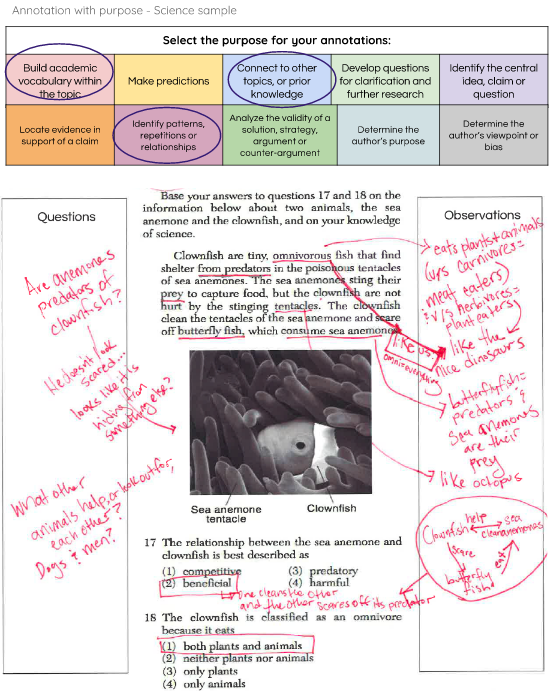
Sample Routine Adaptation: Annotation SS Sample

Routine Posters See 2 items Hide 2 items
Printable student and teacher-friendly reminders
Routine Posters: Annotation 8.5x11 Poster

Routine Posters: Annotation 11x17 Poster

Student Self-Assessment See 1 item Hide 1 item
Track cross content literacy sub-skills over time with rubrics for student self-evaluation. Rubrics provide a starting point for teacher feedback.
Student Self-Assessment: Annotation Rubric


- Character Traits
- Compare and Contrast
- Read Alouds
- Point of View
- Reading Response Ideas
- Summarizing
- Text Features
- Text Structures
- Find the Fib
- Reusable Ideas
- Disclosure Policy
- Lifetime Access
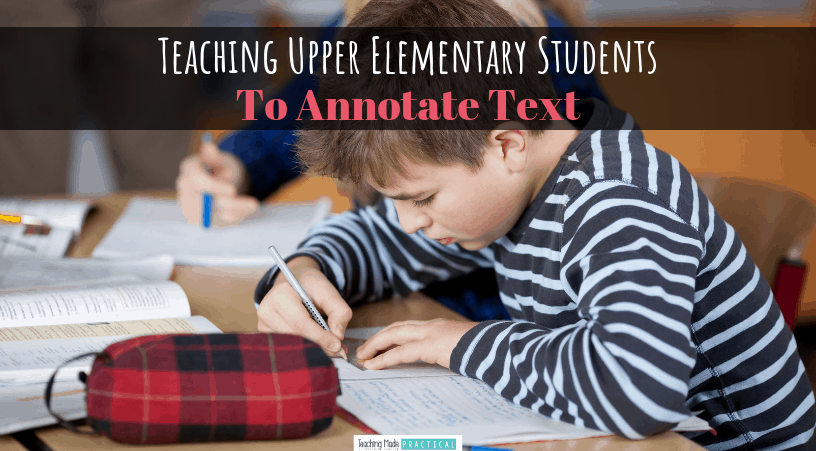
Annotating Text in 3rd, 4th, and 5th Grade
Written by Guest Blogger Jessica Thompson
I remember telling my class we were going to annotate the text. Wait. We are going to anno-what?
Very simply put, to annotate is to take notes or add comments. For students in third, fourth, and fifth grade, learning to annotate the text they are reading will be an imperative skill as they get into middle school, high school, and beyond.
It will help them develop proper study skills, connect to and remember the text, as well as learn to track their own thinking. They will comprehend at a deeper level. It’s a skill that is often overlooked and students are expected to know how to do, but one that we should model to guide them towards success.
Beginning to Annotate Text in Upper Elementary
Students can track their thinking by writing in the margins of the text (if it is a consumable) or do their note-taking in a notebook as they read.
As you begin to teach annotations to students be sure to keep it simple. Start with writing down important facts, thoughts, questions, and unknown words. The students can look up the unknown words at a later time.
Make sure upper elementary students understand why they should annotate. They should be able to explain that it is a way for them to better understand the text and develop a deeper understanding of their thinking. It is also a great way for students to monitor their own comprehension.
Be sure to discuss how students tracked their thinking while reading, so they will get ideas from each other. As you teach new skills in class, apply these to the annotations as well. For instance, if you are teaching main idea, have students identify details that support the main idea. Theme, character traits, problem and solution, etc. The opportunities for students to annotate is endless!
Scaffolding for Student Success
Annotating text will seem tedious to 3rd, 4th, and 5th grade students as they first begin, but soon you will see the quality and the amount that they are writing in those margins increase.
Model annotating text first to ease the students’ minds. Then, annotate together before you let them try it on their own. This gradual release will have them feeling confident as they track their thinking.
After the students get in a routine of annotating, give them a passage to annotate with comprehension questions. They will annotate the text as they read (and reread hopefully!) then go to the questions. They will see the value in annotating when they realize the notes they took helped them answer the questions. Some of the notes may even be the answers they needed. When students begin to have aha moments, let them share their insight with the class.
Shake it Up and Make Annotations Fun
- Use different colored pens. Let the students pick their favorite color, or all the colors, to do their annotations. Kids love having a choice and this gives them some freedom. Your visual learners will love this!
- Use post its. If you are using a text book or library book that cannot be written in, then use post it notes to stick on the pages. No post its? No problem. Let student’s take notes on construction paper or colored computer paper.
- Take a grade. This seems silly and so not fun, but when students realize that they can get a good grade annotating text, it really boosts them up. Their annotations should connect to the skills you are working on in class for it to make sense to take a grade. If you are teaching problem and solution, then their notes should identify the problem and events leading to the solution.
- Science. Seriously, science period. Annotations are not just for reading class, so find an excerpt, a poem, a story, or an article that goes along with the topic being taught in science class and let the students get to work.
- Choose your own text. Have a few options of articles, short stories, or poetry for students to choose from and let them annotate. Students will like choosing a genre and topic that they enjoy. Have options from sports, animals, and any other interesting topics that you know your students will enjoy.
As students get more confident annotating the text, you will begin to notice them doing it on their own. Yay! They will begin to annotate cold reads, homework, and tests and you will jump for joy as a teacher. The biggest challenge is time. Do not make annotations a separate lesson, but instead incorporate annotations into what you are already doing. Use text that you are already using in class. Work smarter not harder and you will see the benefits of annotating text through your students’ comprehension and higher level thinking.
Want This Constructed Response Freebie?

Leave a Reply Cancel reply
You must be logged in to post a comment.
annotating text practice
All Formats
Resource types, all resource types.
- Rating Count
- Price (Ascending)
- Price (Descending)
- Most Recent
Annotating text practice
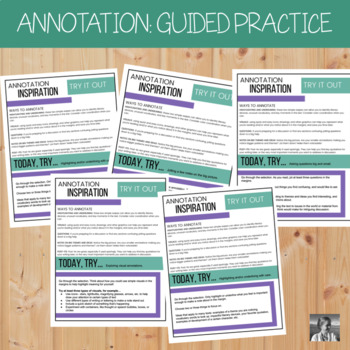
Annotating Text : 5 Guided Practices

- Google Apps™
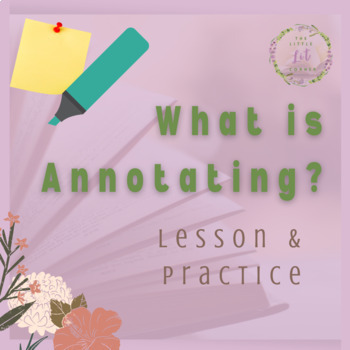
How to Annotate Text : Lesson, Handouts, Practice , Close Reading
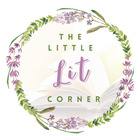
Text Annotating Practice

- Word Document File
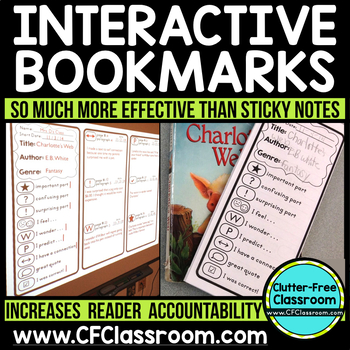
Reading Log for Homework | Annotating Texts | INTERACTIVE BOOKMARKS | EDITABLE

Annotating Literary Texts Nonfiction Close Reading Activities Annotation Skills

- Easel Activity

Annotation Guide for Any Text w/ Google Slides Presentation + Three Practices

Nonfiction and Fiction Graphic Organizers for Reading Comprehension Practice

Annotating Practice

Close Reading Practice : Ten Strategies for Success with PRACTICE
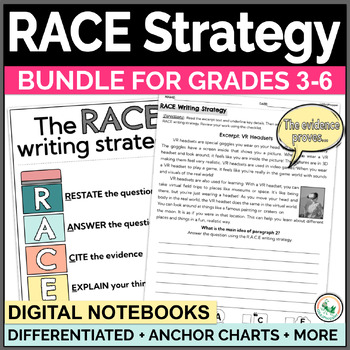
RACE Strategy Practice Worksheets Short Constructed Response RACE Anchor Chart

Passé Composé practice (avoir & être) with interpretive reading #1

Annotating Text Anchor Chart | Annotation Guide | Annotation Bookmark | Lesson

How To Write Nonfiction: Introductions ( Practice + Mentor Texts + Presentation)

How to Annotate a Text Anchor Chart for Middle School or High School

The Complete Personal Narrative Practice Bundle

Close Reading Task Cards: Annotate , Highlight & Find Evidence on the iPad
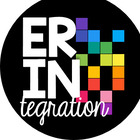
Fear and Arthur Miller’s The Crucible: Practice with Synthesis

Outlining Practice with Informational Text {No-Prep Printables}
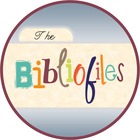
"Tackle the Text "- Entire Program for Close Reading, Annotating & Citing Text

Annotating Text : Collaborative Roles
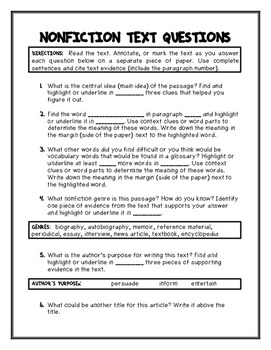
Informational Text Response (ANY Nonfiction Text - Evidence based - Annotating )
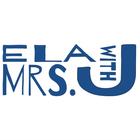
Paired Texts / Paired Passages: Pets Grades 2-3

Reading Strategies Bookmark Fiction & Non Fiction Reading Comprehension Practice

How To Write Nonfiction: Conclusions ( Practice + Mentor Texts + Presentation)
- We're hiring
- Help & FAQ
- Privacy policy
- Student privacy
- Terms of service
- Tell us what you think

IMAGES
VIDEO
COMMENTS
Though he does not discuss annotation, he explains how to find a scholarly book's thesis, methodology, and often even a brief literature review in the introduction. This is a key place for students to focus when creating annotations. A 5-step Approach to Reading Scholarly Literature and Taking Notes (Heather Young Leslie)
Annotating Practice Worksheets Kit, Grades 1-8. Once your students have learned the correct way to annotate a text, have them practice annotating with a purpose! With the Annotating Practice Kit, students will practice their annotation skills while reading the following articles: Eagles. The First Playground. The Dove and the Ant.
Annotation Activity: Create a dice game where students have to find concepts and annotate them based on the number they roll. For example, 1 = Circle and define a word you don't know, 2 = Underline a main character, 3 = Highlight the setting, etc. Teaching students how to annotate gives them an invaluable tool for actively engaging with a text.
Annotation can be: A systematic summary of the text that you create within the document. A key tool for close reading that helps you uncover patterns, notice important words, and identify main points. An active learning strategy that improves comprehension and retention of information.
of the annotation strategies you find most useful. 2. Using the Reading With Your Pen Palette read and annotate the assigned article using the five strategies you selected from the handout. You may use them over and over or use each once. 3. While you read, number your annotations. 4. Please read and annotate the entire article.
i) Circle, highlight, or underline important keywords, terms, and/or definitions. j) Mark anything that you think is important, interesting, or inconsistent. 3. Remember: a) Annotations are brief. Keep it short. b) Annotations should be about information you think is important.
In order to help students access their prior knowledge, the slide provides students with a word bank of 5-10 keywords focused around a central theme in the text. Provide the attached Word Bank handout for the article you are using. Have students use this to write their sentences in the activities throughout the lesson.
Pass out "Eleven" by Sandra Cisneros or any other text appropriate for your students and this activity. Read and discuss the story as needed, but resist spending too much time with the story since the goal of annotation is to get the students to connect with the text in their own ways.; Pass out the Sample Annotation Guide or the one the class created and review the various ideas that were ...
"Annotation" means writing notes while you read, usually directly on the text you are reading. While it is common for students to highlight important information in a text, highlighting is considered a passive activity. We want to take notes as we read. Annotating is an important active reading strategy because we engage with a text as the reader.
Insightful Annotations. Summarize a section or paragraph and highlight supporting details. Make an inference and highlight the supporting details. Explain how the title connects to the text. Make text to self-text-world connections. Explain how a text feature (maps, pictures, charts) connects to the passage. Mark areas of confusion and writing ...
We discuss how annotating helps readers: focus on what they are reading. understand details of a text, including complex or difficult to understand details. keep track of their thoughts and feelings about a texts and its details. keep track of important details. prepare for discussion. prepare to write about a text.
Read closely to determine what the text says explicitly and to make logical inferences from it; cite specific textual evidence when writing or speaking to support conclusions drawn from the text. ... This routine helps students to start with an annotation purpose, and then partner up to capture, share and clarify inferences. Contents 11 Components
Determine what it means, a plausible purpose, and the impact. Think: Circle words and phrases that are impactful and interesting. Think about how this shows the author's attitude about a subject (the tone) and the mood created through word choice. Jot thoughts in the margins. Determine: Determine the theme of the poem.
Creating text annotations during close readings can help you follow the author's argument or thesis and make it easier to find critical points and supporting evidence. Plus, annotating your own texts in your own words helps you to better understand and remember what you read. This guide will take a closer look at annotating text, discuss why it ...
Close Reading Annotations. Hone reading skills by asking students to make close reading annotations! Perfect for fourth- and fifth-grade classrooms, this chocolate-themed worksheet introduces helpful markings for annotating a reading. Whether students are reading fiction or reading nonfiction, they can use these tools to better understand a text.
Seriously, science period. Annotations are not just for reading class, so find an excerpt, a poem, a story, or an article that goes along with the topic being taught in science class and let the students get to work. Choose your own text. Have a few options of articles, short stories, or poetry for students to choose from and let them annotate ...
All About These 15 Worksheets. These worksheets for students about annotation are designed to help students engage more deeply with texts by actively analyzing and interpreting them. They include a variety of activities that encourage critical thinking and annotation techniques. Some of the activities that are included in these worksheets ...
Ideally, you should read a text through once before making major annotations. You may just want to circle unfamiliar vocabulary or concepts. This way, you will have a clearer idea about where major ideas and important information are in the text, and your annotating will be more efficient.
Teaching students to annotate with a purpose will help them focus on what is most important about the text. Use the worksheets and text excerpts in the Annotating Practice Kit to get students annotating with a purpose. Kit includes: Annotating Practice: Eagles. Annotating Practice: The First Playground. Annotating Practice: The Dove and the Ant.
Annotation Worksheets To Print: Explore It - Read the assigned text. Then follow the directions to see how to put this technique to work for you. Using Symbols - Read and annotate the assigned text. Use the symbols presented below. Outline - This is a graphic orgainzer designed to help you keep track of how you broke down some work.
Worksheets. Results for annotating text practice. 900+ results. Sort by: Relevance. ... Quality annotation helps kids remember what they read, and discuss and write about it more effectively. ... Improve your students' reading comprehension and literacy skills while laying the foundation for close reading and annotation with this Active Reading ...
Worksheet: Evaluating and Annotating an Article Use this worksheet to formulate your evaluative annotations that will constitute the majority of your final project: the annotated bibliography. What is an annotation? An annotation is a brief descriptive and evaluative note that provides enough information about
a. Level 1: good for grade levels 3-5 OR students new to annotation b. Level 2: good for grade levels 6-8 OR students with practice c. Level 3: good for grade levels 9-15/college readiness OR students with practice IV. Annotation Examples: Examples of each annotation level using one of the